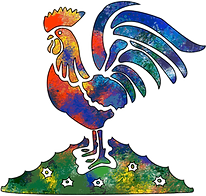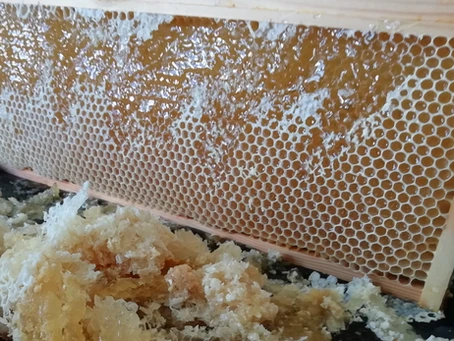Our honeycombs have been bursting with delicious pure honey! Over the last few days we have spent lovely quality time with our bees, and emptied their supers ready to be filled again. We love sharing our work with you, so here is a step-by-step process on how we extracted our honey:
Step 1: Wax On/Wax Off
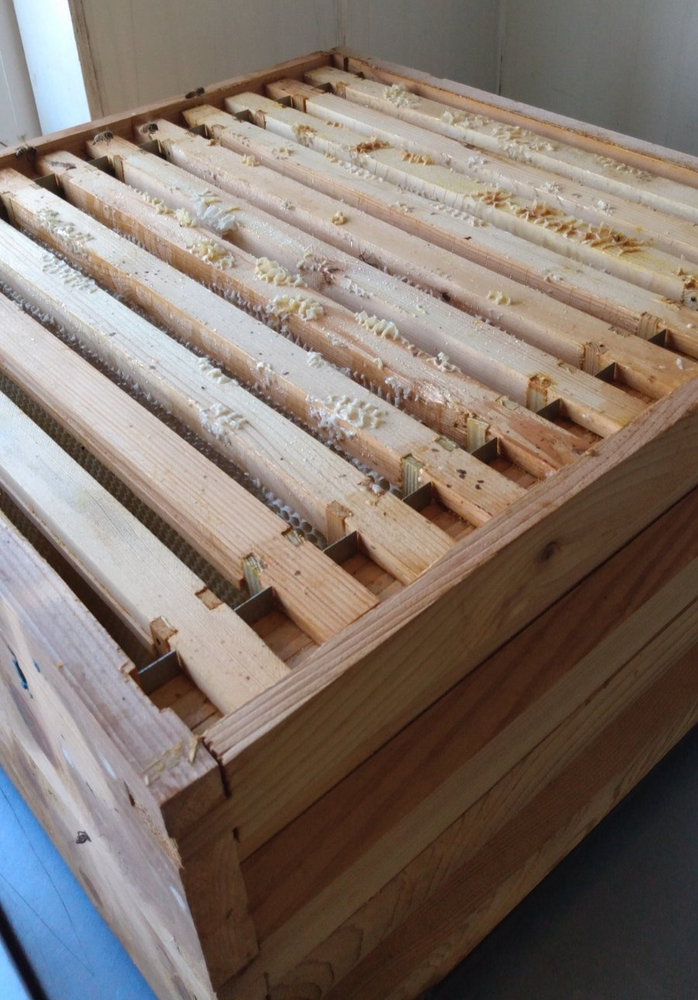
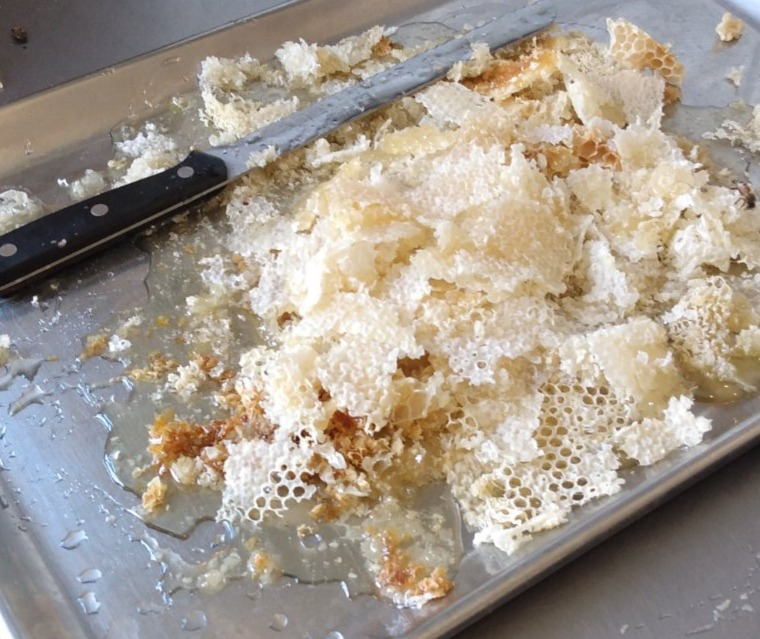
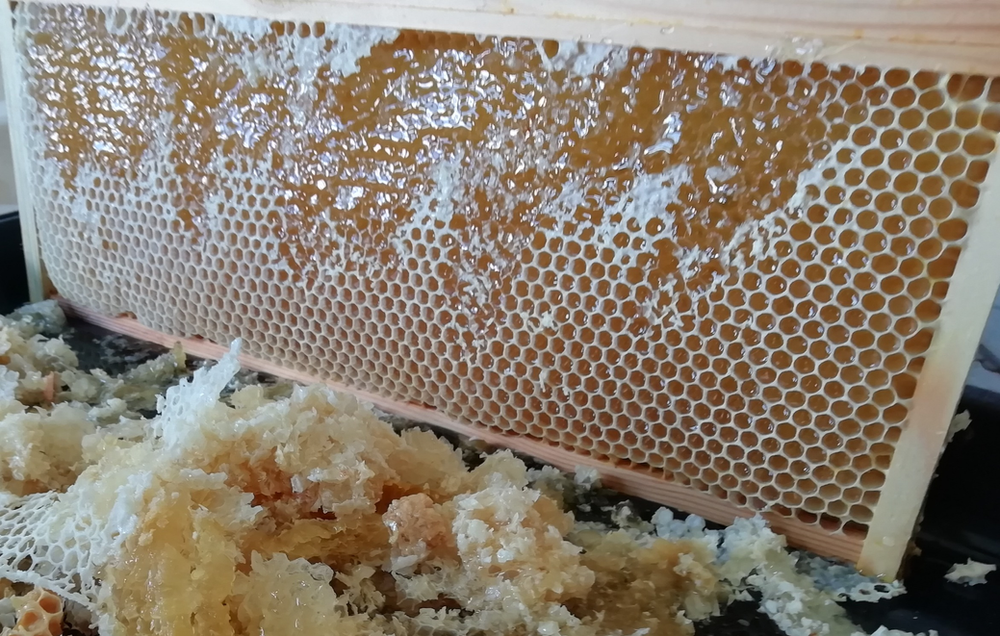
After getting the supers out of the hive (being very careful not to get stung!), we can begin the process of extraction. Bees create a wax seal – called cappings – over each hexagon to keep the honey in the comb and to preserve it until needed. As you can see, they fill the comb until it’s almost bursting! We gently cut off the cappings with an ordinary kitchen knife which releases a little honey. Most of it will stay in the comb ready for the next stage.
Step 2: Centrifuging
https://video.wixstatic.com/video/1879e9_6e97d1e669c9496f8d9bd588dc1196f4/720p/mp4/file.mp4
Next we load the supers in the drum ready for some intense spinning! The centrifugal force forces the honey out of the comb which is then splattered on the side. The honey runs down and collects at the bottom for the next bit. This method doesn’t heat the honey and maintains it in it’s natural raw form.
Step 3: Pour your heart out
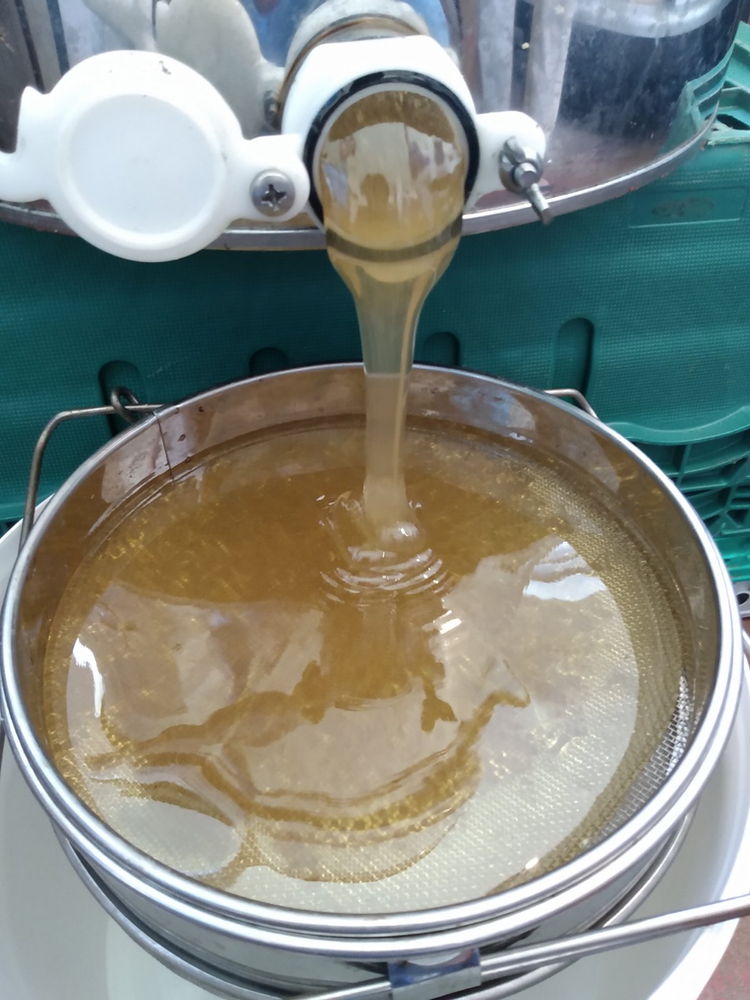
The drum has a stopper which when removed releases all the sweet golden elixir! This is poured over 3 different sieves of different sizes to make sure the final product is just pure, clear runny honey (yum). We left all the equipment outside for a couple of days so the bees could scoop the honey residue to be used again in the hive.
Is the honey organic?
Organic honey cannot be produced in the UK. In order for honey to be certified organic, there needs to be an assurance that the bees collected pollen from flowers that have not been treated with any pestisides/chemicals. Bees have a very large radius, and land in the UK is simply not big enough!nnWill this help with hayfever?
Honey has many health benefits! Among other things, it naturally contains anti-inflammatories which helps to boost the immune system. This will help ease the symptoms of hayfever.nnOur method of extraction ensures pollen and all the goodness remains in the honey. Although there is little scientific evidence of honey helping with hayfever, some experts point out that honey can contain traces of flower pollen — an allergen. And one treatment for allergies is repeated exposure to small amounts of allergens. The lack of evidence is due to having too many variables to conduct a reliable study, so the pollen theory has yet to be disproven!nnIt’s looking promising – A study of 44 participants in Finland with confirmed Birch pollen hay fever were given local honey containing birch pollen and a local honey not containing birch pollen.
Compared to a control group that did not take any honey, those taking the birch pollen honey had significantly lower symptoms with 70% fewer severe symptom days and 50% reduction in medication.
In fact, those taking either form of local honey had more days without symptoms than the control group. Of those taking the regular local honey 44% reported less need for medication, better general health, fewer colds and stomach upsets compared with 7% of those in the control group.nnIt is important to note the study started in November – prior to the hayfever season. Studies starting later or just at the start of hayfever season yielded unreliable results.nnOh Sugar!n nNo sugar is added to the final product.nnOur bees are only fed a sugar water solution at the end of Autumn after the final honey harvest. This gives the bees a helping hand in surviving the winter months after they’ve generously spent the summer producing honey for our consumption (meaning they have less for themselves). They do not make honey with this solution, and will only use it for food.
